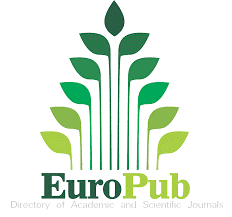Effect of well-expressed nitrogen in the initial phase of coffee cultivation (Coffea arabica L.) in "La Argelia" of the Loja canton
DOI:
https://doi.org/10.54753/blc.v13i2.1867Keywords:
biofertilizers, nitrogen, aquatic fern, cyanobacteria, NitrAgua, biogenic agricultureAbstract
In the present time, due to the increase in pollution caused by the use of chemical fertilizers and the continuous degradation of productive systems, the use of environmentally friendly alternatives is required. Azolla is an aquatic fern capable of fixing nitrogen from the air in symbiosis with the cyanobacterium Anabaena. In addition, it constitutes a valuable biofertilizer for crop production. In order to measure the effect of well-expressed nitrogen in the initial phase of the coffee crop, an experimental design of random blocks with three replicas and five treatments (Control, Conventional fertilizer urea, Foliar application with NitrAgua, Irrigation with NitrAgua, and azolla biomass) was used. The best results were obtained with the application of azolla biomass, with increases during a span of five months. Including an increase of 19.3 cm for plant height, 3.2 mm for stem diameter, 66 g for coffee cherry weight, 11, 19, 72 for the number of branches, leaves and fruits respectively. Azolla proved to be an effective biofertilizer through the contribution of well-expressed nitrogen in the coffee crop (Coffea arabica L.). The application of Azolla filiculoides as a biofertilizer is an alternative that can be used to improve the physical-chemical properties of the soil, as well as achieve a good production and grain quality, due to its ease of decomposition and high content of available nitrogen.References
Alarcón et al., (2015). Leisa revista de agroecología Volumen 29 número 4 by Revista Leisa—Issuu. https://issuu.com/leisa-al/docs/leisa_vol29n4/6
Arenas, S.L. (2018). Contribution of nitrogen to agriculture. Revista Chapingo Serie Horticultura, 10, 173–178. https://doi.org/10.5154/r.rchsh.2002.07.039
Arias, A. (2012). El sector cafetalero ecuatoriano y su orientación hacia la exportación, 58.
Armijos, A., & Nicasio, F. (2020). TRABAJO TITULACIÓN TRABAJO EXPERIMENTAL.
Bianco, L. (2020). Principales aspectos de la nodulación y fijación biológica de nitrógeno en Fabáceas. Idesia (Arica), 38(2), 21–29.
Canet Brenes, G., Soto Víquez, C., Ocampo Thomason, P., Rivera Ramírez, J., Navarro Hurtado, A., Guatemala Morales, G., Villanueva Rodríguez, S., Jalisco (México) (CIATEJ), C. de I. y A. en T. y D. del E. de, & Agricultura (IICA), I. I. de C. para la. (2016). La situación y tendencias de la producción de café en América Latina y el Caribe.
Cardoza, P. (2015). EVALUACIÓN DE LA PRODUCCIÓN DE BIOMASA DE Azolla filiculoides (helecho acuático) EN FUNCIÓN DE LA CONCENTRACIÓN Y TIPO DE FERTILIZANTE, EN CONDICIONES DE LABORATORIO, CENTRO DE. 65.
Condori, P. C. (2019). “Cultivo de café y modos de vida local: Caso familias del cantón Puyango de la provincia de. 145.
Flores, N. M. (2012). EVALUACION DE LA PRODUCCION DE PLANTINES DE TRES VARIEDADES DE CAFÉ (Coffea arabica L.) BAJO TRES TIPOS DE SUSTRATOS.
Junco, P. I. V., & Bravo, T. E. A. (2016). DIFERENTES APLICACIONES FOLIARES DE BIOL”.
Milla Pino, M. E., Oliva Cruz, S. M., Leiva Espinoza, S. T., Collazos Silva, R., Gamarra Torres, O. Á., Barrena Gurbillón, M. Á., & Maicelo Quintana, J. L. (2019). Características morfológicas de variedades de café cultivadas en condiciones de sombra. Acta Agronómica, 68(4), 271–277.
Mishra, J. et al., (2015). The Azolla-Anabaena Symbiosis: Basic Biology. Annual Review of Plant Physiology and Plant Molecular Biology, 40(1), 193–210.
Montaño Armijos, M. (2010). Proyecto azolla anabaena.
Montaño Armijos, M. (2015). Vista de Estudio de la aplicación de Azolla Anabaena como bioabono en el cultivo de arroz en el Litoral ecuatoriano.
Montaño Armijos, M. D. J. (2020). Azolla: Nuevo paradigma del futuro del arroz.
Ortega, W. et al., (2014). Mineralización de nitrógeno de rastrojo de vainica (Phaseolus vulgaris) en un suelo andisol tropical. Cuadernos de Investigación UNED, 11(3), 388–394
Sánchez, S. V., Bueno, D. O., & Jara, P. P. (2018). La realidad Ecuatoriana en la producción de café. RECIMUNDO: Revista Científica de la Investigación y el Conocimiento, 2(2), 72–91.
Sánchez, L. (2019) Manejo sustentable de café Caturra. COFENAC. p.29 -32
Sharma. E. et al., (2012). Uso eficiente del nitrógeno en agricultura: Formas de absorción, aplicación y efectos beneficiosos.
Vargas, P. (2020) Universidad Técnica de Manabí, Estudio de densidad poblacional y fertilización en cuatro clones de café Catimor y Geisha
Wagner, R. (2011). Historia del café de Guatemala. Villegas Asociados.
Published
How to Cite
Issue
Section
License
Copyright (c) 2023 Bosques Latitud Cero

This work is licensed under a Creative Commons Attribution-NonCommercial-ShareAlike 4.0 International License.
This work is published under the Creative Commons Attribution-NonCommercial-ShareAlike 4.0 International (CC BY-NC-SA 4.0) license. This means that users may copy, distribute, and adapt the content, provided that proper credit is given to the authors and the journal. Commercial use of the material is not permitted. Additionally, any derivative work must be distributed under the same license. This license ensures open access to knowledge, promoting the dissemination and reuse of published works for non-commercial purposes, respecting authorship, and ensuring the free circulation of content under fair terms.




























